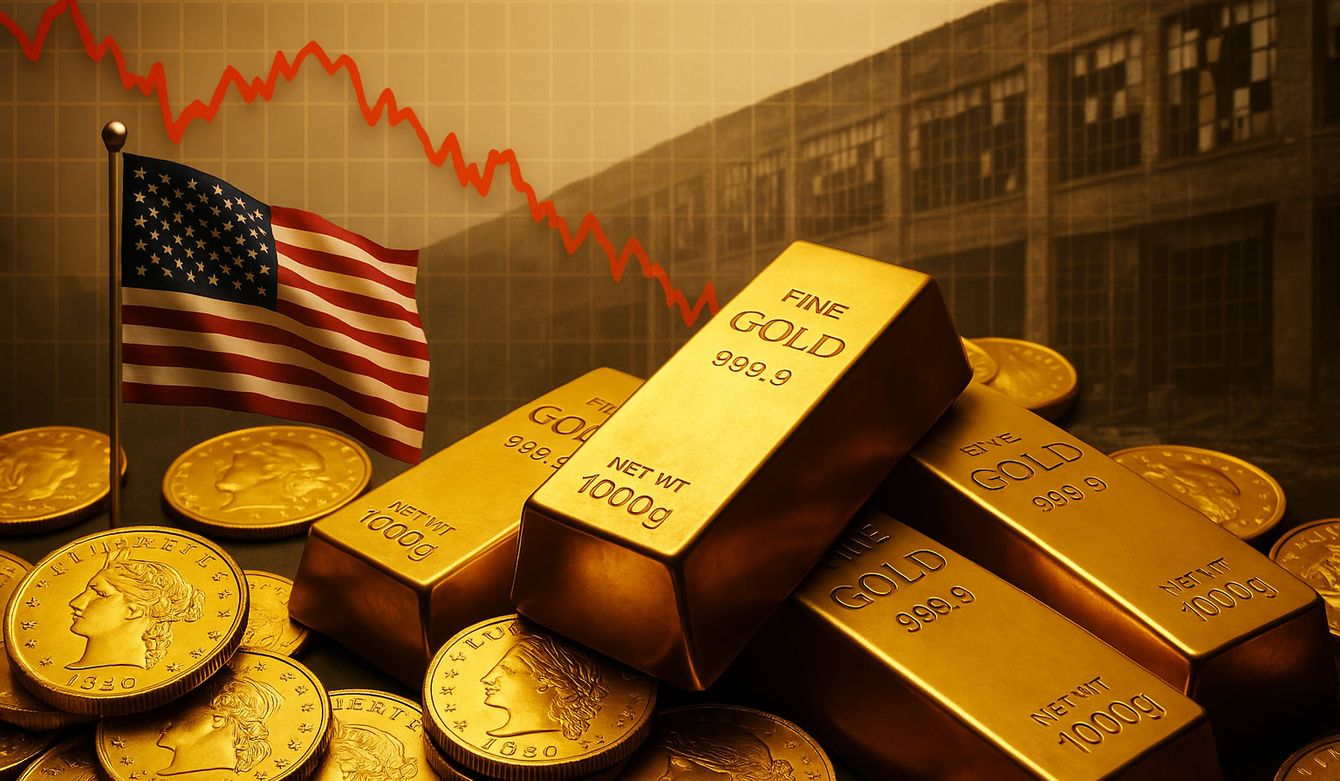Gold Prices Decline Amid Shifting Inflation Expectations and Economic Uncertainties, Fed Signals Caution

Gold Prices Slide as Inflation Outlook and Economic Risks Take Center Stage
In recent weeks, gold prices have experienced a notable downturn, reflecting a complex interplay of evolving inflation expectations and mounting economic uncertainties. The US Federal Reserve’s latest communications have played a pivotal role in shaping investor sentiment, signaling a more cautious stance on inflation trends and economic growth prospects. This shift has prompted market participants to reassess the role of gold as a safe-haven asset amid fluctuating global conditions.
The Federal Reserve’s Influence on Gold Markets
The Federal Reserve’s monetary policy and economic outlook remain key drivers behind gold price movements. In its most recent statements, the Fed acknowledged that inflationary pressures are moderating but cautioned that risks to economic growth persist. This nuanced message has led investors to temper their expectations for aggressive rate hikes, while simultaneously weighing concerns over potential economic slowdowns.
Gold traditionally benefits from rising inflation and economic uncertainty, as investors flock to the precious metal to preserve wealth. However, when inflation expectations cool and the Fed signals a balanced approach, demand for gold can wane, exerting downward pressure on prices.
Inflation Expectations: A Delicate Balance
Inflation remains a central theme in global markets. Over the past year, elevated inflation rates prompted central banks worldwide to tighten monetary policy aggressively. Yet, recent data suggest that inflation may be peaking or even receding in some sectors, leading to a recalibration of market forecasts.
The Fed’s latest projections indicate a gradual easing of inflation, supported by improving supply chains and stabilizing commodity prices. While this development is positive for consumers and businesses, it diminishes one of the primary catalysts for gold’s appeal.
Investors now face the challenge of navigating a landscape where inflation is neither spiraling uncontrollably nor fully subdued, creating uncertainty about the best strategies to hedge against future risks.
Economic Risks and Their Impact on Safe-Haven Demand
Beyond inflation, broader economic risks continue to influence gold markets. Geopolitical tensions, fluctuating energy prices, and potential disruptions in global trade contribute to an environment of caution. The Fed’s recognition of these risks underscores the fragile nature of the current economic recovery.
In times of heightened uncertainty, gold often serves as a refuge. However, when economic risks are perceived as manageable or when investors favor riskier assets due to optimism about growth, gold’s safe-haven status can diminish.
Recent market data reveal a rotation away from gold toward equities and other higher-yielding investments, reflecting a more risk-on sentiment among certain investor segments.
Technical and Market Dynamics
From a technical perspective, gold prices have broken below key support levels, triggering further selling pressure. Trading volumes have increased as investors adjust portfolios in response to shifting fundamentals.
Currency fluctuations, particularly the strength of the US dollar, also play a critical role. A stronger dollar makes gold more expensive for holders of other currencies, typically dampening demand. The dollar’s recent gains, partly driven by expectations of sustained US economic resilience, have compounded downward pressure on gold prices.
The Global Perspective: How Other Markets Respond
Gold’s performance cannot be viewed in isolation. Global markets are interconnected, and developments in other regions influence precious metals.
For instance, central banks in Europe and Asia are navigating their own inflation and growth challenges, which affect their monetary policies and, by extension, global capital flows. Emerging markets, where gold holds cultural and economic significance, also impact demand patterns.
Moreover, geopolitical flashpoints-from tensions in the Middle East to trade negotiations-remain wildcards that could swiftly alter market dynamics and rekindle gold’s safe-haven allure.
What Lies Ahead for Gold Investors?
Looking forward, gold’s trajectory will hinge on several key factors:
-
Inflation Data: Continued moderation or resurgence in inflation will heavily influence gold’s appeal.
-
Federal Reserve Policy: Any shift toward more aggressive tightening or easing will recalibrate market expectations.
-
Economic Growth: Signs of recession or robust recovery will affect risk appetite and safe-haven demand.
-
Geopolitical Developments: Unexpected crises or escalations could drive investors back to gold.
For investors, maintaining a balanced approach is crucial. While gold remains a vital component of diversified portfolios, its short-term volatility underscores the importance of monitoring macroeconomic indicators and central bank signals closely.
Conclusion
Gold’s recent price decline reflects a nuanced market environment shaped by evolving inflation expectations and persistent economic risks. The US Federal Reserve’s cautious outlook has tempered the metal’s safe-haven demand, while broader global factors continue to inject uncertainty. As markets navigate this delicate balance, gold investors must stay vigilant, adapting strategies to a landscape where inflation, growth, and geopolitical developments intersect.

MNF
Content Creator at MNF
Passionate about delivering high-quality content on technology, news, and more. Follow me for the latest updates and insights.
Leave a comment
Share your thoughts and comments on this post.
Comments
There are no comments. Be the first to comment 😊💡